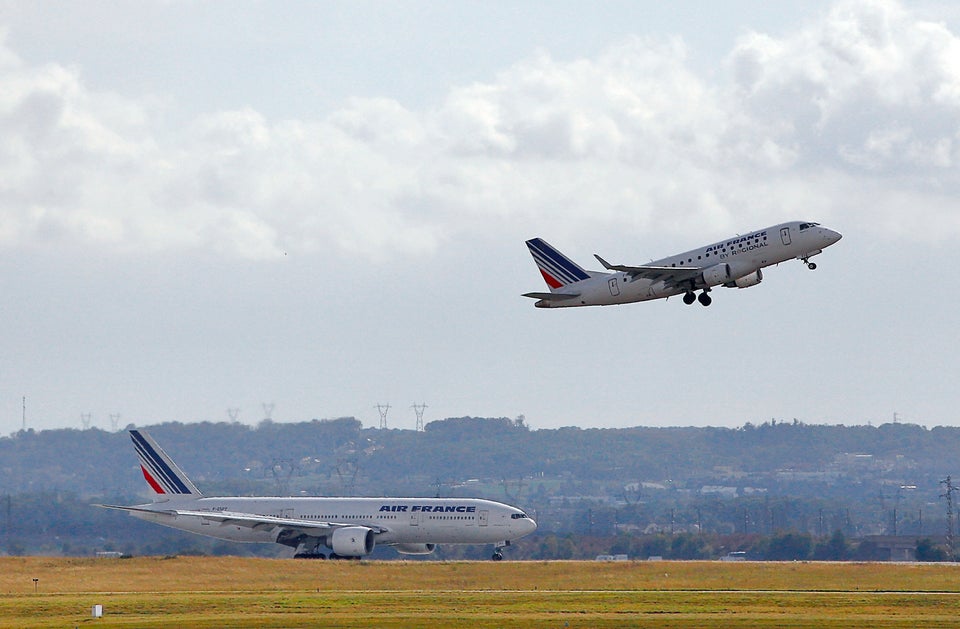
President Barack Obama stood on the steps of a Georgetown University hall on a hot and humid Tuesday afternoon to reinforce his pledge to tackle climate change -- a challenge he said carries direct consequences for "our children and the health and safety of all Americans."
"Someday, our children, and our children's children, will look at us in the eye and they'll ask us," Obama said. "Did we do all that we could when we had the chance to deal with this problem and leave them a cleaner, safer, more stable world?"
The health risks of global warming, of course, go well beyond high temperatures -- as dangerous as heat waves can be -- or even extreme weather events, including droughts, floods and superstorms mentioned by Obama during his speech.
In fact, many of the worries raised by public health experts didn't make it into Obama's remarks or the White House plan to address climate change unveiled on Tuesday.
"Climate change degrades environmental quality in a way that inflicts multiple insults on health," George Luber, director of the U.S. Centers for Disease Control and Prevention Climate and Health Program, said during an interview with The Huffington Post earlier this month.
"It's death by a thousand cuts," Luber said, noting exacerbated ozone pollution, allergies and infectious disease. "Cumulative exposures add up to a significant burden on health."
In light of Obama's words on Tuesday, however, it may be appropriate to consider the public health benefits that may result from cumulative actions taken to fight climate change.
Central to The President's Climate Action Plan is setting the first limits on how much carbon dioxide power plants may spew from their stacks.
Carbon dioxide is the primary heat-trapping greenhouse gas increased by human activity, with power plants responsible for 40 percent of U.S. emissions. Levels of carbon dioxide in the Earth's atmosphere surpassed 400 parts per million in May -- something the planet hasn't seen in at least 4 million years.
"Power plants can still dump unlimited amounts of carbon pollution into the air for free. That's not right, that's not safe and it needs to stop," said Obama, before pausing to wipe sweat from his brow on Tuesday afternoon.
Experts expressed cautious optimism after Obama's promises of carbon cuts. Even Obama noted in his speech that it will "take time for carbon emissions to stabilize," and we "need to get prepared" for the "impacts of climate change that we cannot avoid."
While Obama's climate plan outlines efforts to train public health leaders to prepare communities for the health consequences, it leaves out some subtle effects of changes in temperature and moisture around the globe, such as the arrival of dengue and other tropical diseases in the U.S.
Luber highlighted one frightening fungal disease, formerly found only in the subtropics, now gaining a foothold in the Pacific Northwest. Cryptococcus gattii lives on the surface of tree bark in forested areas, posing particular risk to hikers.
"The fungus has found a new home," said Luber, suggesting warming air and sea temperatures are among factors including global transportation that likely spurred the spread. "These are the type of surprises that we have to anticipate."
Threats are also posed by high levels of carbon dioxide, Luber added, completely independent of weather.
"The potential for non-weather related effects of climate change could actually be the most impactful," said Luber. "When I say that out loud in the halls of the CDC, people think I'm crazy."
Elevated carbon dioxide, for example, has been shown in experiments to reduce protein and micronutrients in food crops, such as soybean and corn.
"This is pointing to a startling and scary proposition that, in a CO2-enriched world, not only could we have more a difficult time growing these crops because of the impact of extreme temperatures and precipitation and increased use of pesticides due to more predation, but we'd also be producing crops that are less nutritious," said Luber.
More allergens in the air and more poison ivy at our feet are among additional consequences of more carbon dioxide in the atmosphere.
Dr. Brian Moench, president of Utah Physicians for a Healthy Environment, highlighted a "whole cascade of public health consequences of the climate crisis," from dust storms to forest fires to toxic air.
"We know hotter temperatures are a catalyst for ozone formation," Moench said. "We also know hotter temperatures exacerbate the health effects of that pollution."
One obvious health concern connected with air pollution is asthma. Rates of the respiratory disease have doubled over the last 30 years, and Obama's new plan notes that "children will suffer more asthma attacks as air pollution gets worse."
Moench suggested that regulations on carbon may further clean the air via the "de facto closure of a lot of coal-fired power plants," which notoriously emit toxic heavy metals and particulates in addition to carbon dioxide.
"We're making coal a lot less economic, which is long overdue," Moench said, listing health concerns caused by air pollution, from diabetes to depression. Even autism, which now affects one in 32 boys in Utah, has been associated with dirty air. Air quality in parts of Utah can actually be unhealthier than in Los Angeles for a good part of the winter.
"It's hard to overstate how many things can be related to this," Moench said. "We see higher rates of virtually every kind of disease that we see among smokers. Air pollution is just a kind of diluted smoke."
Luber suggested that our understanding of how climate change affects health is constantly evolving, with the "laundry list" of consequences likely to grow.
Even when considering the severe weather events highlighted by Obama, there may also be what Luber called "disasters within disasters."
Scientists predict climate change will bring more frequent and severe weather events, much like the record droughts, floods and heat the U.S. endured over the last year. But what happens when a massive storm and heat wave hit the same place at the same time, knocking out power when people need it most -- like to run air conditioners?
"The probability of these complex emergencies will also increase with climate change," noted Luber. "This opens up the potential for cascading effects."

